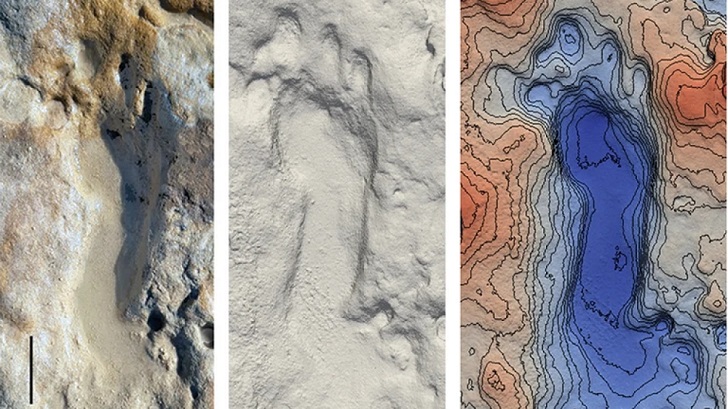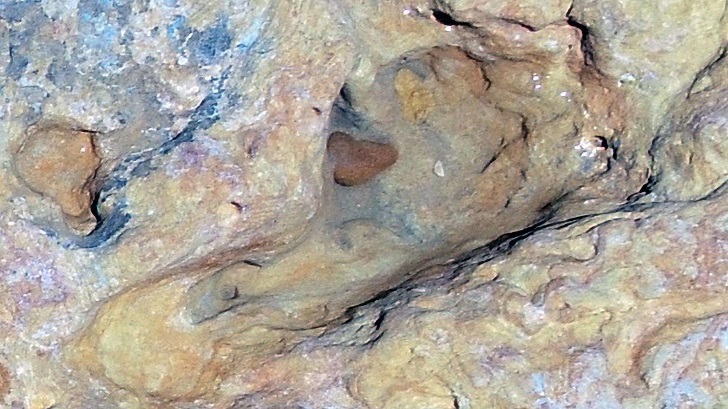Archaeological discoveries often provide valuable insights into the lives and behaviors of our ancient ancestors. Recently, an extraordinary find occurred in Spain, where a series of hominin footprints dating back 296,000 years were unearthed. This remarkable discovery sheds light on the movements and interactions of our distant relatives, providing a fascinating glimpse into their world.
The Discovery
In the summer of 2022, a team of researchers led by the Catalan Institute of Human Paleoecology and Social Evolution (IPHES) uncovered a set of well-preserved footprints in the Catalan pre-Pyrenees region of Spain.
These footprints were found within layers of sediment in a coastal marshland, providing an exceptional preservation environment. The sheer magnitude of this find, comprising more than 160 footprints, made it a significant breakthrough in paleoanthropology.

Mayoral et al. 2021/ Other/ AP | The discovery in June 2020 of hominin footprints was a revolution for the scientific world
Interpreting the Footprints
The footprints discovered provide valuable information about the hominins who left them behind. Based on their size and characteristics, researchers believe that the tracks were made by Homo heidelbergensis, an extinct human species known to have lived during the Middle Pleistocene period. The footprints reveal bipedal locomotion, resembling modern human footprints but with certain distinct features.
Implications for Human Evolution
The footprints, approximately 296,000 years old, make them the oldest hominin footprints ever found in Europe. This finding challenges previous notions about the timing and dispersal of early humans on the continent.
It suggests that Homo heidelbergensis was present in Europe much earlier than previously believed, and it opens up new possibilities for studying their migration patterns and interactions with other hominin species.

Gabriel Ugueto/ SciNews | Homo heidelbergensis is an extinct species or subspecies of archaic human which existed during the Middle Pleistocene.
Insights Into Social Behavior
The distribution and arrangement of the footprints provide intriguing clues about the social behavior of our ancient ancestors. The footprints appear to be organized into small groups, indicating that individuals may have moved together in social units. This discovery suggests that early human societies exhibited cooperative behavior and perhaps engaged in communal activities such as hunting, gathering, or even social rituals.
Environmental Context
The location of the footprints within a coastal marshland offers valuable insights into the paleoenvironment during the time of Homo heidelbergensis.
Analysis of the sediment layers and accompanying fossil remains can help reconstruct the ecological conditions and resources available to our ancient ancestors. This information is crucial for understanding their survival strategies, dietary patterns, and adaptation to changing environments.
Technological Implications
While the footprints do not reveal any direct evidence of tool use or technological advancements, they provide a chronological context for studying the development of early human technologies.

Eduardo Mayoral/ Newsflash | The Matalascañas footprints are now more valuable due to their contribution to the fossil records of hominins in the Middle Pleistocene
Homo heidelbergensis is known to have used stone tools, so the footprints' age suggests a timeframe for the emergence and evolution of these tools. Additionally, the footprints offer potential clues for identifying activity areas and sites where tool production and use may have occurred.
Preservation Challenges and Conservation Efforts
Preserving and studying such delicate and ancient footprints present numerous challenges. Exposure to the elements and human activity can quickly erode these priceless traces of our past. Recognizing their significance, researchers are taking steps to protect and conserve the footprints.
This includes ongoing excavation work, creating digital models, and implementing preservation measures to ensure their long-term survival for scientific research and public appreciation.




